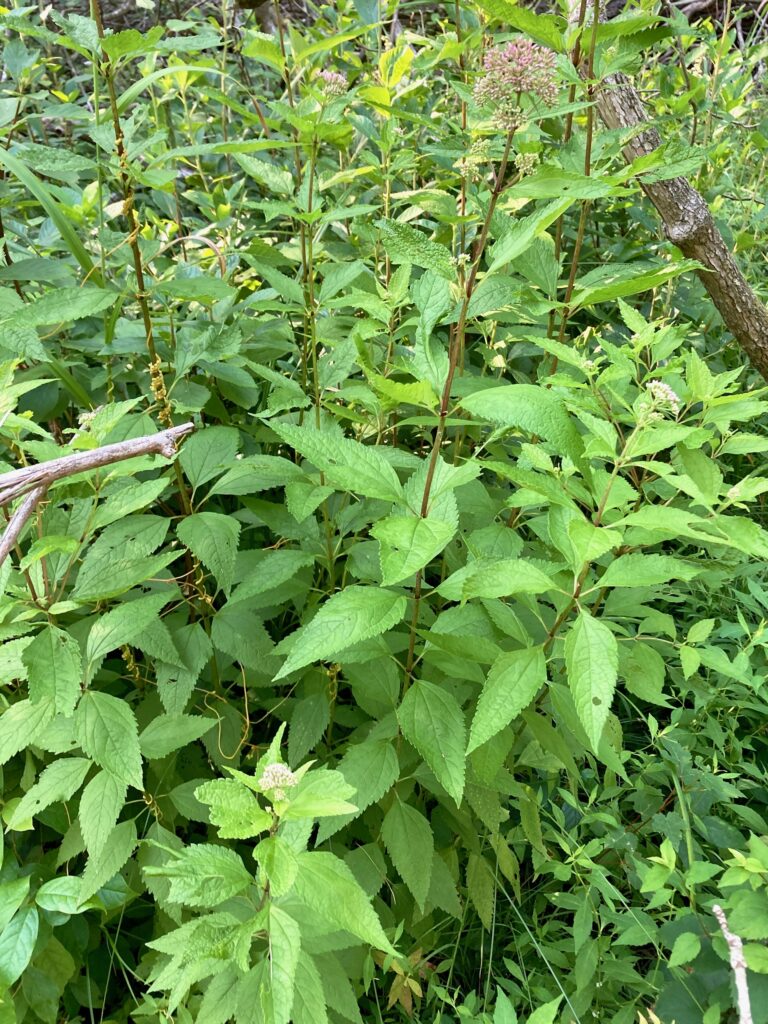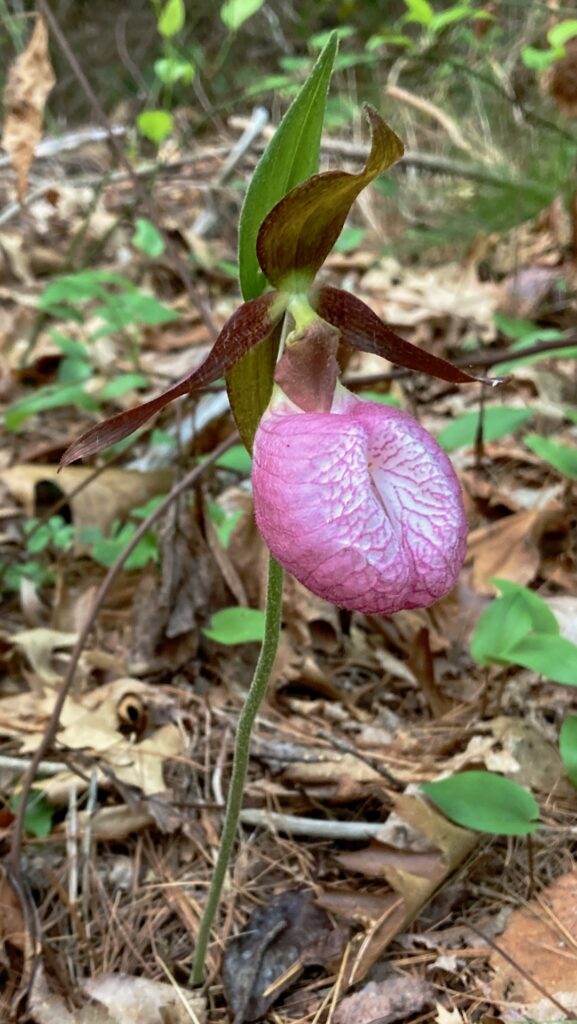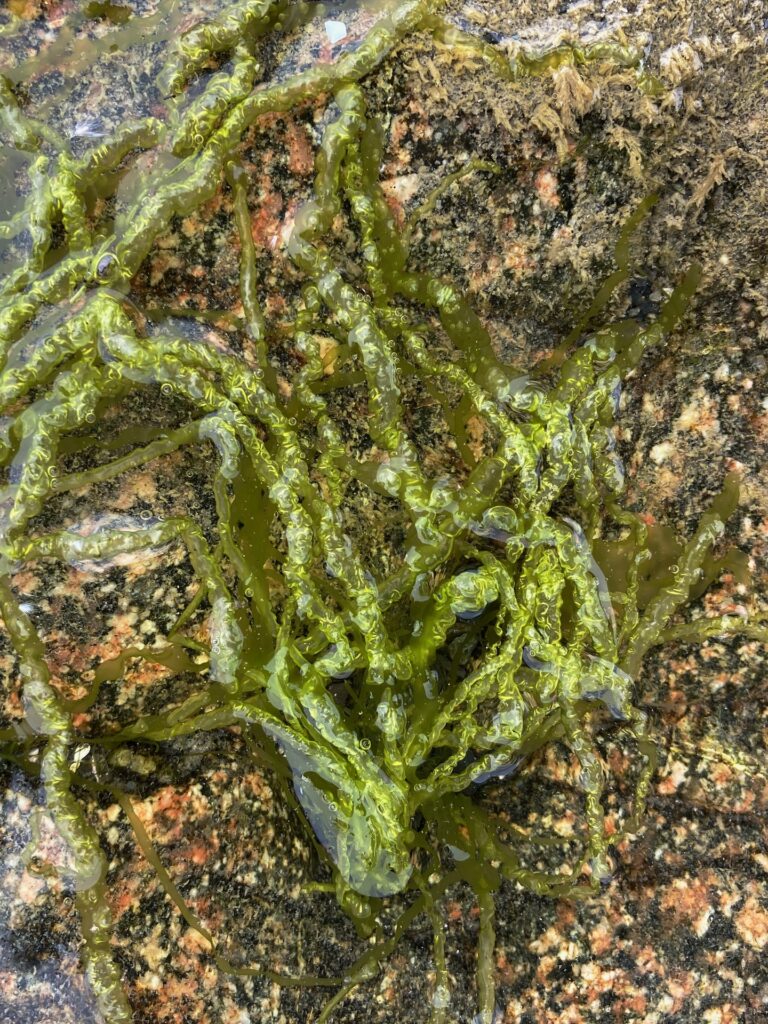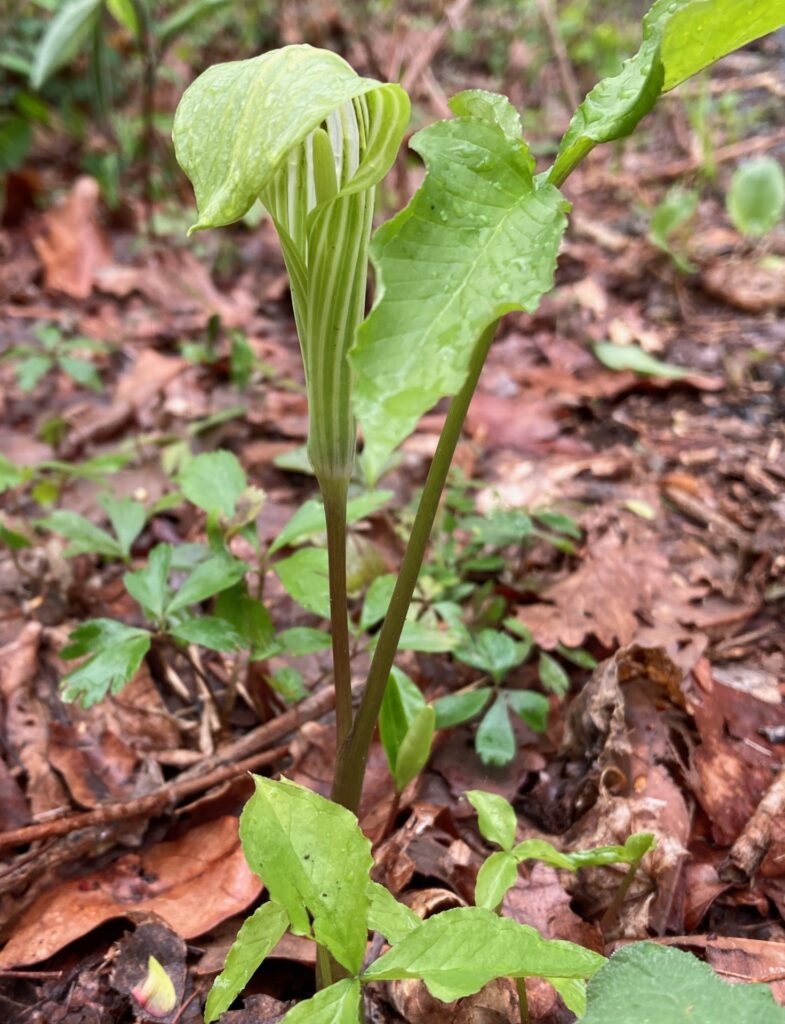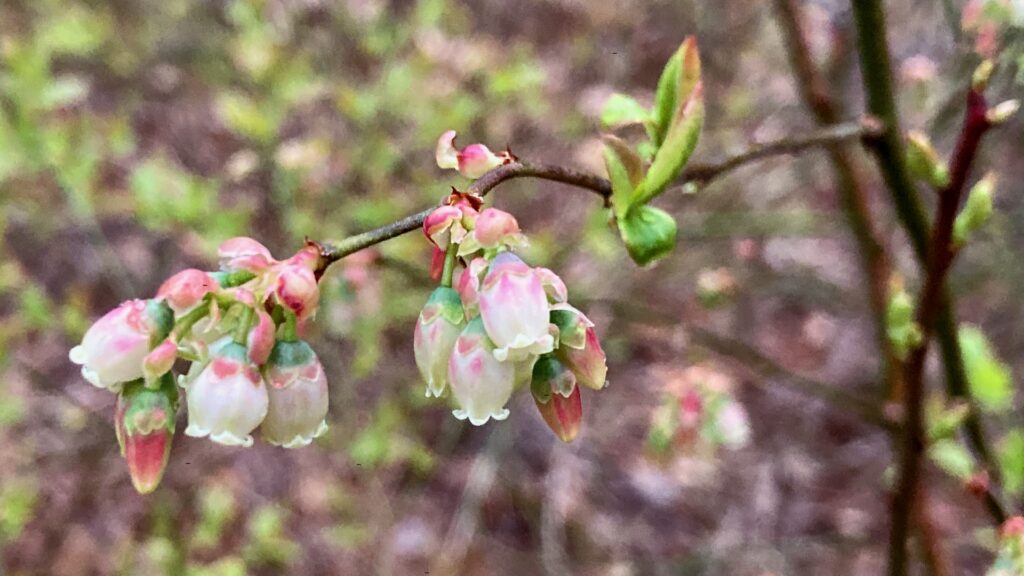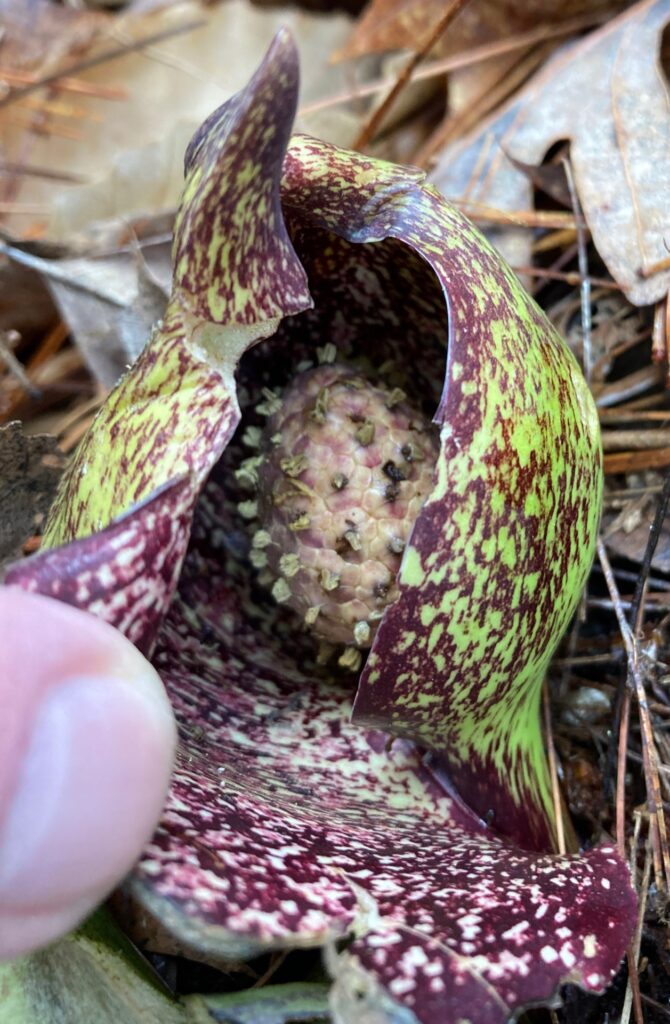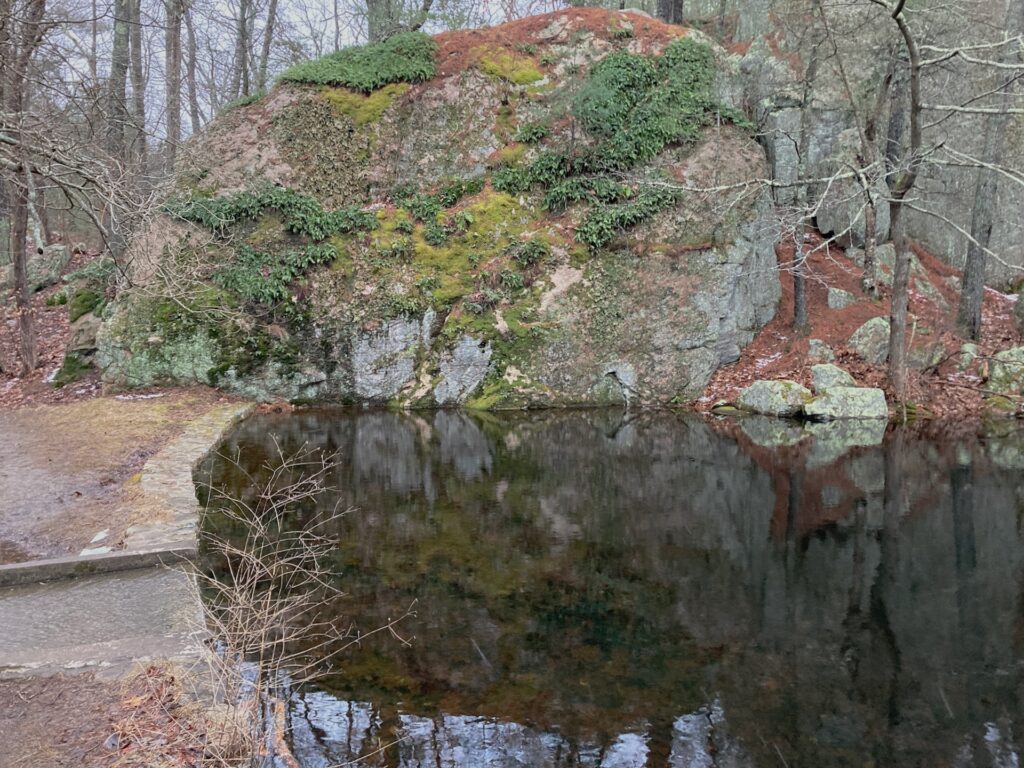Perhaps my favorite fall flower is Joe-pye weed (Eutrochium spp.). There’s something about the color of the flowers and the color of the foliage that gets me, I don’t know why. I often have a strong emotional response to certain colors, and when sunlight catches the dull purple of Joe-pye Weed, I can feel it in my chest. I have no idea why this is so, I just know that it happens.
On a walk this afternoon, I came upon some Joe-pye Weed nest to a rushing stream in the Whitney-Thayer Woods in Cohasset. About a hundred feet of the trail, near one of the crossings of Brass Kettle Brook, was flooded from the torrential rains we had last week. I was teetering along on logs and stones that someone had conveniently placed alongside the trail, when there it was by the side of the trail: those dull purple buds almost ready to burst into bloom.
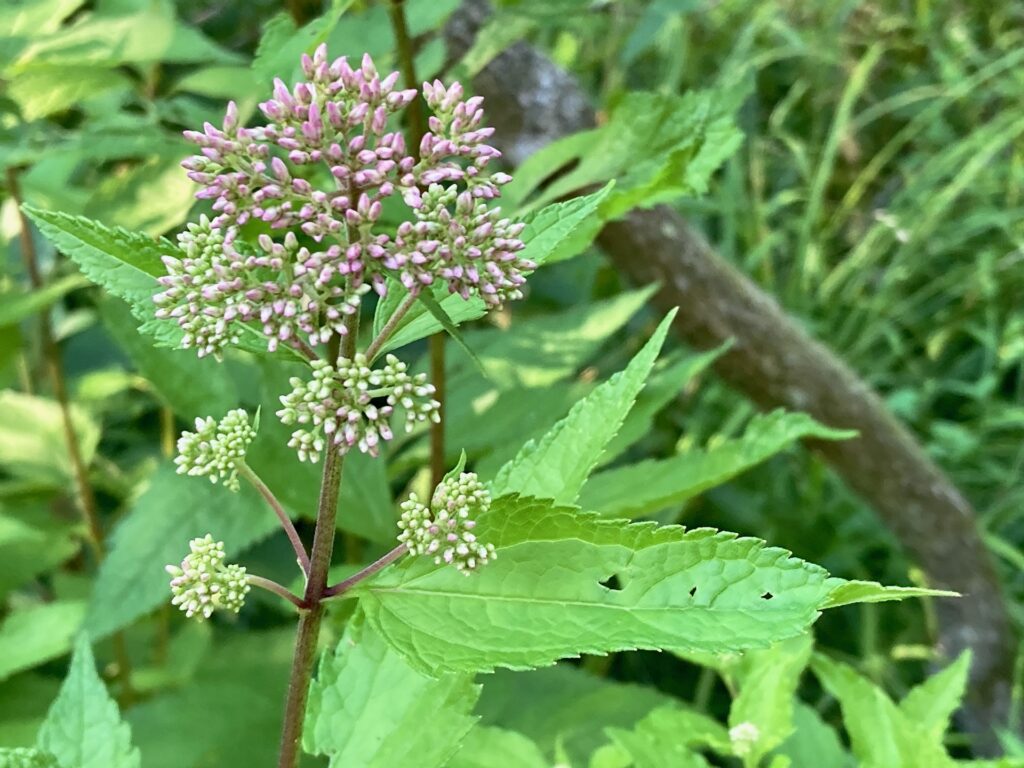
I’ve been trying to figure out which species of Joe-pye weed this was. I think it’s Coastal Plain Joe-pye Weed (Eutrochium dubium), but I admit that I get confused by the online dichotomous key of the Native Plant Trust (—are the leaf blades triple-veined? —are the stems spotted or streaked with anthocyanin? —what exactly is the shape of the capitulescence?). Admittedly, I didn’t try as hard as I might to figure it out, since the dichotomous key tells me that E. dubium is “difficult to distinguish from related species.” Nor do I really need to know exactly which species of Joe-pye Weed it is — they all have similar flowers which evoke the same emotional response in me.
